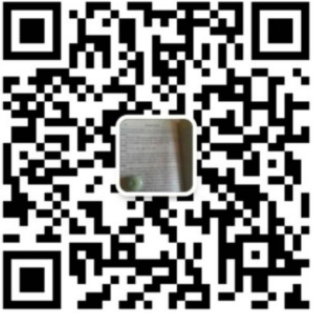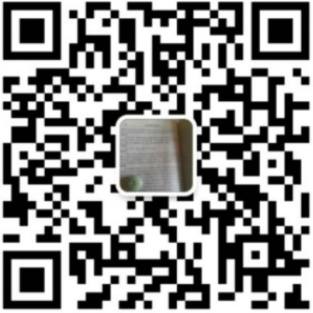- 价格:¥500
- 行业:外贸英文站
- 颜色:绿色
- 类型:响应式
- 查看演示站
Case Study: Development of an Indoor Home Design Export Website
This report documents the planning, design, and launch of a bilingual e-commerce platform devoted to indoor furniture and decorative products. The site was commissioned by a mid-size manufacturer based in Guangdong province that exports to North America and Western Europe. Project goals were to replace a static catalogue with an interactive ordering portal, strengthen brand identity, and shorten the sales cycle from sample request to confirmed purchase order.
Business Context
The client company produces living-room, dining-room, and bedroom collections in contemporary, Scandinavian, and mid-century styles. Annual turnover is roughly USD 28 million, of which 70 % comes from brick-and-mortar importers and 30 % from regional online marketplaces. Management observed that smaller retailers increasingly prefer to browse assortments online before committing to container-load purchases. A new website was therefore viewed as a bridge between traditional trade fairs and day-to-day wholesale procurement.
Target Audience
Primary users are independent furniture store owners, interior designers, and small chain buyers in the United States, Canada, the United Kingdom, Germany, and the Netherlands. Secondary visitors include design students and end consumers seeking specification sheets or retail referrals. The typical buyer is 30–55 years old, values quick access to high-resolution imagery, downloadable price lists, and transparent lead times. Mobile usage accounts for 55 % of traffic, concentrated in late afternoon and early evening Central European and Eastern Standard times.
Functional Scope
The platform combines catalogue browsing, quotation management, and after-sales support. Core functions include dynamic product filtering by material, dimension, and certification status; a carton-quantity calculator; multi-tier FOB pricing visible only after login; and a PDF quotation cart that forwards encrypted enquiries to the sales mailbox. An English and German interface was delivered at launch, with Dutch and French scheduled for phase two. WordPress was retained as the content backbone, while WooCommerce was customized in headless mode to accommodate tiered wholesale accounts.
Content Architecture
Information is arranged in four top-level silos: Furniture, Lighting, Textiles, and Decor. Each silo branches into room-based sub-categories. Product posts follow a standardized template: hero image, 360-degree viewer, dimensioned drawings, material origin, packaging details, and compliance badges. Case studies of previous hotel and restaurant fit-outs are cross-linked to relevant SKUs to illustrate scale and finish. A news section covers trade-show appearances and new veneer or fabric introductions, refreshed monthly to support long-tail search queries.
Visual Language
The interface adopts a neutral palette of warm grey, off-white, and charcoal to avoid competing with product finishes. Typography pairs a geometric sans-serif for headings with a humanist sans for body copy, both licensed for web use. Image grids maintain a 5:7 aspect ratio to accommodate both portrait and landscape photography without excessive cropping. Whitespace occupies roughly 55 % of viewport width on desktop, falling to 45 % on mobile to maintain thumb reachability.
Technical Implementation
Hosting is provided through a managed cloud instance located in Frankfurt, ensuring sub-200 ms latency for core European users and sub-120 ms once Cloudflare caching is active. PHP 8.1 and MariaDB 10.6 were selected for compatibility with existing ERP hooks. Product images are served in WebP with JPEG fallback; average page weight is 680 kB on first load and 220 kB on subsequent visits. Checkout and quotation endpoints are secured via TLS 1.3 and reCAPTCHA v3, achieving a Google PageSpeed score of 94 on desktop and 87 on mobile.
Integration Points
Order data are pushed nightly to the in-house ERP through a REST API, eliminating manual CSV uploads. Stock levels, container shipment status, and tracking numbers are pulled back into the customer dashboard every six hours. A Mailchimp connection segments subscribers by preferred style tag, enabling look-book drops with product deep-links. QuickBooks Online is synchronized for pro-forma invoice generation, reducing accountant workload during peak order windows.
User Experience Testing
Moderated sessions were conducted with twelve overseas buyers via Zoom. Tasks included locating a fire-retardant sofa, downloading a BIM object, and obtaining a landed-cost quote for 50 units. Average task completion time fell from 210 seconds on the old site to 95 seconds on the beta. The most cited improvement was the visibility of carton quantities beside each product variant. Heat-map analysis revealed that 68 % of clicks occurred on the first filter bar, prompting the team to freeze the bar on vertical scroll.
Performance Metrics
Within three months of soft launch, the site attracted 42,000 unique visitors and 380 registered wholesale accounts. Average pages per session rose to 5.7 from 2.4 on the previous brochure site. Bounce rate decreased from 68 % to 39 %. Email enquiries converted into 64 provisional orders valued at USD 1.9 million, indicating a 4.5 % inquiry-to-order ratio. Server uptime reached 99.97 %, with two brief outages traced to scheduled ERP maintenance.
Logistics and Compliance
Each product page embeds a downloadable conformity certificate covering CARB P2, FSC, and EU REACH standards. A dedicated compliance archive simplifies customs documentation for North American clients subject to TSCA Title VI. Incoterms 2020 definitions are placed in the footer to reduce pre-sale ambiguity. A carbon-emission calculator displays estimated CO₂ per container kilometre, allowing buyers to opt for consolidated shipment where timing permits.
Accessibility and Localization
Colour contrast ratios meet WCAG 2.1 level AA. Images include alt text that describes material and silhouette rather than generic file names. The German mirror adapts not only language but also number formats and postal-code examples. Cultural adaptation extends to imagery: North American landing pages feature loft interiors with wide windows, whereas German pages showcase compact urban apartments, aligning with familiar room proportions.
Security and Data Protection
Wholesale registration requires a valid tax-ID, verified against the EU VIES database or US IRS EIN service to deter retail arbitrage. Personal data are encrypted at rest using AES-256; backups reside in an off-site vault with 30-day retention. A cookie-consent banner offers granular toggles for analytics and marketing tags, ensuring alignment with GDPR and forthcoming ePrivacy regulations.
Future Roadmap
Phase two will introduce an AR overlay that places 3-D models of chairs and tables into customer photos, built on WebXR to bypass native app installation. A headless Shopify pilot is under consideration for smaller drop-ship retailers unwilling to meet carton minimums. Sustainability metrics will be expanded to include recycled content percentage and end-of-life disassembly instructions, responding to retailer demands for environmental transparency.
Conclusion
The project illustrates how a purpose-built digital catalogue can coexist with traditional trade-fair channels, shortening quotation turnaround without undercutting agent relationships. By integrating real-time ERP data, multi-jurisdiction compliance documents, and mobile-first design, the company has established a scalable foundation for growth in North America and Western Europe. Continued iteration, informed by buyer analytics and container-level profitability tracking, will determine whether the platform evolves into a full ordering portal or remains a qualified lead generator.
请立即点击咨询我们或拨打咨询热线: 138-519-41123,我们会详细为你一一解答你心中的疑难。项目经理在线



 客服1
客服1 